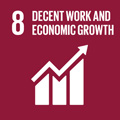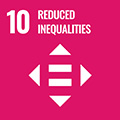- Docente: Marco Mancuso
- Credits: 6
- SSD: L-ART/03
- Language: Italian
- Teaching Mode: Traditional lectures
- Campus: Bologna
- Corso: Second cycle degree programme (LM) in Cinema, Television and Multimedia Production (cod. 5899)
-
from Mar 31, 2025 to May 14, 2025
Learning outcomes
The course aims at providing the theoretical-methodological and historical-critical tools necessary to understand contemporary art from the beginning of the 20th century to the multimedia formulations of the last decades. In particular, at the end of the course students: - have an up-to-date knowledge of the disciplinary approaches useful for investigating the visual experience in contemporary society; - have the ability to deal with the evolution of artistic movements and the consequent modifications of languages, also in relation to the changes in techniques and artistic practices, with critical approach; - have the ability to contextualize this knowledge within the theories of cinema and photography.
Course contents
The emergence of new types of images and new technologies for production and visualization, along with the increasing ease with which images are produced, reproduced, transmitted, and archived, has led to a series of transformations in the status of images and their social uses, the consequences of which are still to be fully deciphered.
The course aims to guide a theoretical and critical reflection on the impact of these technologies on contemporary imagination and the forms of visual culture through the evolution of formal, aesthetic, and expressive paradigms in art from the 20th century to the present. Drawing on the interdisciplinary languages of visual arts, literature, philosophy, photography, cinema, video, and digital media, the course takes inspiration from new millennium experiments with advanced technoscientific tools and techniques. It seeks to outline a theoretical framework interwoven with the artistic movements and avant-garde of the 20th century, while simultaneously fostering an understanding of the cultural, sociological, anthropological, and political mechanisms at work in 21st-century society.
Through a system of analysis, comparison, and synthesis of practices, aesthetics, and research, the course highlights how technoscientific discourse has had an increasing impact on contemporary society and its cultural apparatuses, and how their evolution over the last hundred years has simultaneously shaped key advancements in technoscientific research. The goal is to draw from these trajectories to envision the relationship between visual culture, art, and society in the near future, leveraging the interdisciplinary practices and research of artists whose works build upon and evolve the dreams and imaginaries of the 20th century.
The course is structured through a series of lessons exploring the visual experience in contemporary society, engaging in analysis and reflections on visual and cultural languages in relation to their evolution during the 20th and 21st centuries. Topics include the growing interdependence with techniques and technologies of representation and connection devices, the process of categorizing reality and the world, automated and intelligent systems of vision and computation, identity narratives and forms of virtuality, processes of control and surveillance, expanded bodies, the impact of extraction and categorization strategies by Artificial Intelligence, the transformative promises of genetics and biotechnology, and the relationship with the environment and other species.
Readings/Bibliography
Required Reading (choose one book for the exam):
- Mirzoeff N., Introduction to Visual Culture, Routledge, 1999
- Berger J., Ways of Seeing, Penguin Books, 1972
Optional Reading (choose one book for the exam):
- Pinotti A., Somaini A., Cultura visuale. Immagini, sguardi, media, dispositivi, Einaudi, 2016
- Benjamin W., The Work of Art in the Age of Mechanical Reproduction,1936
- Mancuso M., Arte, Tecnologia e Scienza. Le Art Industries e i nuovi paradigmi di produzione della New Media Art, Mimesis Edizioni, 2018
- Quaranta D., Media, New Media, Postmedia, Postmedia Books, 2010
- Arcagni S., L'occhio della macchina, Piccola Biblioteca Einaudi, 2018
- Manovich L., The Language of New Media, MIT Press, 2002
- Arielli E., Manovich L., Artificial Aesthetics: Generative AI, Art, and Visual Media, 2021-2024
- Farinotti L., Grespi B., Villa F., a cura di, Harun Farocki. Pensare con gli occhi, Mimesis Edizioni, 2017
__________
The program is the same for all students, whether attending or not.
Students with specific learning disabilities (SLDs) or temporary/permanent disabilities: It is recommended to promptly contact the university office responsible for support and the course instructor to find the most effective strategies for attending lectures and/or preparing for the exam.
Teaching methods
Frontal lessons accompanied by various textual and audiovisual aids, viewing of materials distributed by the artists or sourced online and/or from archives, essential for understanding the methodology applied to the course.
Active participation in the lessons is fundamental because the slides and provided materials are intentionally devoid of texts to study. Instead, they contain prompts, references to artists, and critical analyses of the topics covered in each lesson. Only through shared reflection in the classroom can students best prepare for the final exam.
Assessment methods
The exam consists of an oral interview, the same for all students (both attending and non-attending), to assess the critical and methodological skills developed, based on the preparation of a written essay. During the exam, one of the mandatory books and one book of the student’s choice will also be discussed.
Students must demonstrate their acquisition and mastery of the fundamental concepts of the topics covered and the methodological approach adopted. For the essay, the evaluation will focus on the ability to critically organize the reflections presented in class, the quality of writing—avoiding the use of tools like ChatGPT or other LLMs—the ability to source references, the analysis of original cases, and strict adherence to editorial guidelines.
The ability to present topics in a manner that is not only formally correct but also critically aware will be assessed.
______________
The program is the same for all students, whether attending or not.
Students with specific learning disabilities (SLDs) or temporary/permanent disabilities: It is recommended to promptly contact the university office [https://site.unibo.it/studenti-con-disabilita-e-dsa/en] responsible for support and the course instructor to find the most effective strategies for attending lectures and/or preparing for the exam.
Teaching tools
The slides for each lesson will be uploaded to the dedicated teaching support platform (Virtuale).
Additional suggestions for specific readings, films, interviews, videos, and/or art projects will be shared as needed during each lesson.
Links to further information
https://www.unibo.it/sitoweb/marco.mancuso7/
Office hours
See the website of Marco Mancuso
SDGs




This teaching activity contributes to the achievement of the Sustainable Development Goals of the UN 2030 Agenda.
